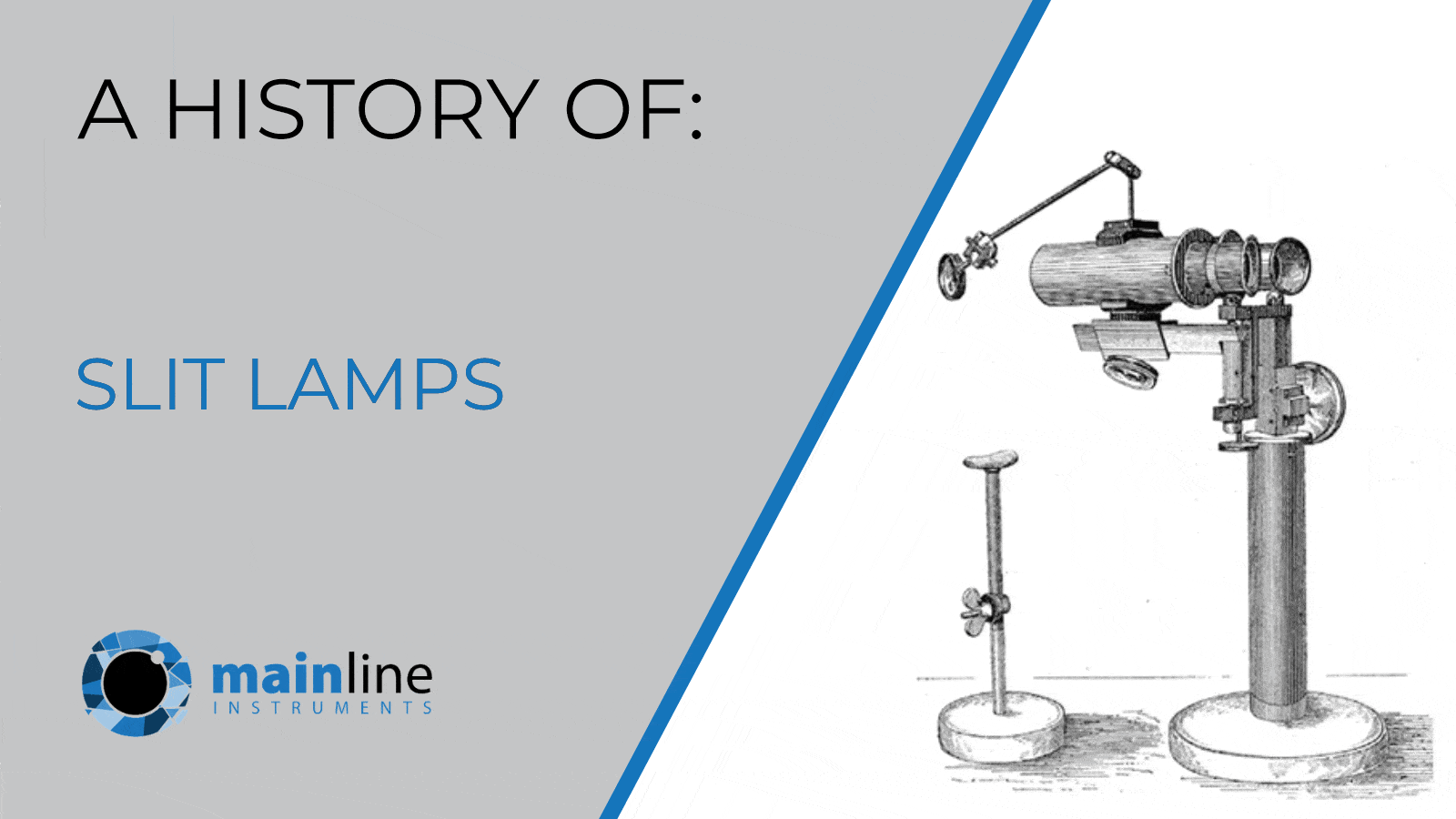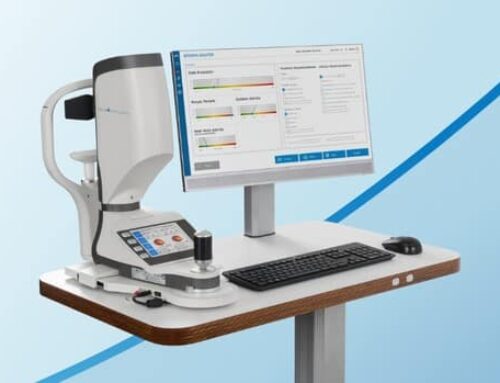What is a slit lamp?
A slit lamp has two components, a bright source of light shone through a slit and a binocular microscope.
It is used by ophthalmologists and optometrists to examine the anterior segment and posterior segment of the eye, which includes the eyelid, sclera, conjunctiva, iris, natural crystalline lens, and cornea. The examination provides a stereoscopic magnified view of the eye structures, enabling diagnoses to be made for many eye conditions[1].
Binocular microscopes
The binocular microscope component was first developed in 1891, by Aubert to view the cornea. In 1899 Siegfried Czapski’s corneal surface microscope with stand was developed by Zeiss and a movable source of illumination was added[2].
Slit illumination
The first device to feature slit illumination was developed by Allvar Gullstrand and demonstrated at Heidelberg in 1911. He focused the image of a red hot rod through a slit.
The development of the Zeiss Slit Lamp in 1916 would help immensely with the budding practice of contact lens fitting. It combined slit illumination with a corneal microscope. It used a powerful binocular microscope with a bright light source, allowing different illuminations and magnified views of the layers and structures of the cornea.
Slit Lamps in the UK
In the 1920s Ida Mann and Harrison Butler introduced the use of the slit lamp to England.
Using a slit lamp was time-consuming because the light source and microscope both had to be focused separately. It remained a specialist piece of equipment until in 1933, a joystick controlled mechanism was created to focus the two components together.
In 1950 Hans Littmann combined the two components so you could also swing the illumination system around, a useful feature in contact lens examinations. These types of slit lamps were around for nearly 50 years.
Modern day slit lamps can magnify from anywhere between 6x and 40x.
Control lever and filters are inserted to see the eye in different colour filters to see different things.
Slit lamps can also record image and video so that what is seen through the microscope can be recorded and reviewed.
To see our full range of slit lamps, including digital ready devices from brands such as Huvitz, Keeler and Tomey, click here.
References
[1] https://en.wikipedia.org/wiki/Slit_lamp
[2] https://www.college-optometrists.org/the-college/museum/online-exhibitions/virtual-ophthalmic-instrument-gallery/slit-lamps.html#:~:text=A%20slit%20lamp%20allows%20close,the%20retina%20and%20the%20vitreous).







